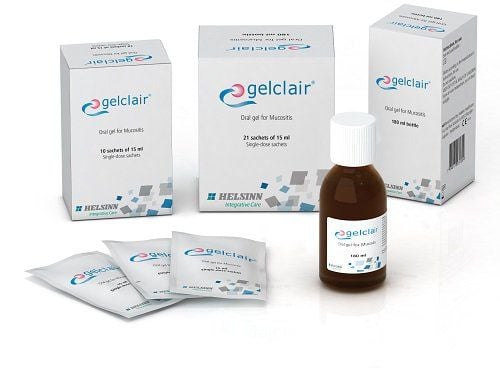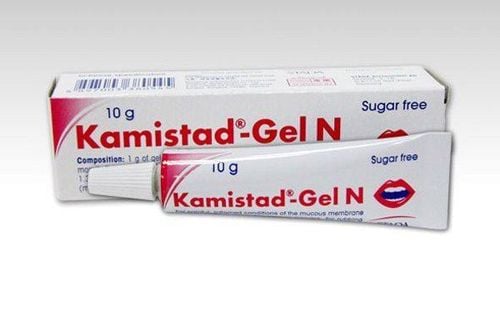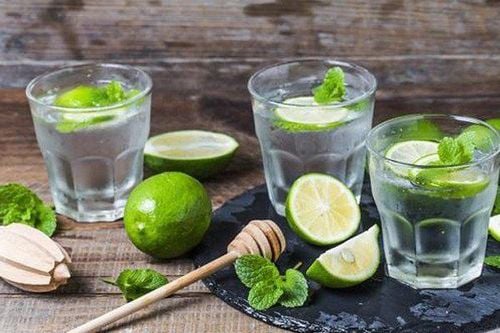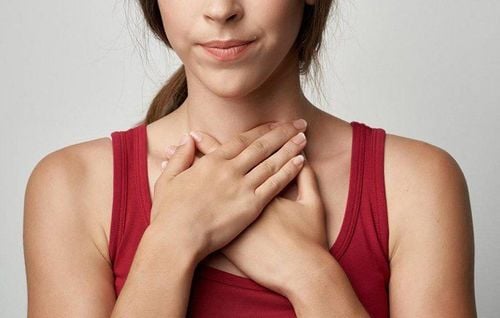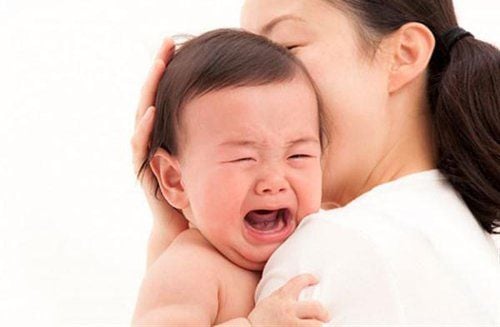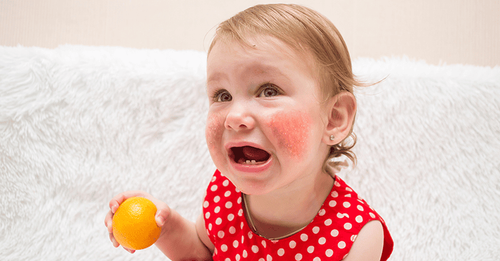This is an automatically translated article.
The article was professionally consulted with Master, Doctor Truong Thanh Tam - Pediatrician at the Department of Pediatrics - Neonatology - Vinmec Danang International General Hospital.Heat rash is a common illness in young children when the weather is too hot, seemingly easy to treat and take care of at home. However, if the parents do not properly care for the child at home, it can be dangerous for the child. So what should parents do when their children have typhus fever and how to treat the disease at medical facilities?
1. What is heat rash?
Heat rash, also known as heat rash or erythema, usually appears on the skin when a baby's body is too hot. In this case, the baby's skin will often appear small red bumps. Children can get heat rash at any age, but it's most common in infancy.Heat rash appears in many different places on the body, usually in areas of excessive sweating such as forehead, neck, shoulders, back, chest, diaper area, body folds that cause severe itching each time. bout.
Heat rash can last for a few days and clears up quickly when the ambient temperature improves, when the child stops sweating. However, if not properly treated, skin lesions will take a long time to heal, spread, cause exhaustion or become infected with pustules, causing serious complications for the whole body.
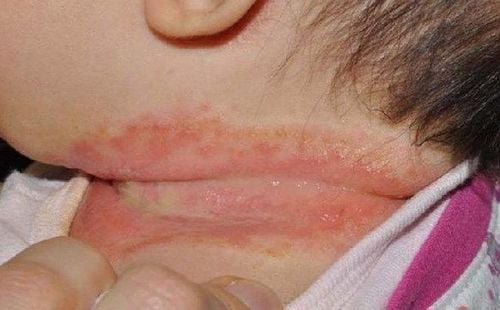
Phát ban nhiệt xuất hiện ở nhiều vị trí trên cơ thể
Millet rash also known as leukoplakia, common in newborns, consists of tiny white blisters appearing in clusters on the surface of the skin, neither inflammation nor redness. around. The rash is less itchy and usually goes away in a few hours to a few days. Eczema, also known as heat rash, is the most common form in children. This is a type of heat rash characterized by reddening of the skin, the appearance of many discrete blisters or clusters of red spots on the skin, causing a prickling sensation or intense itching. Heat rash is common in hot weather, when sweat ducts become blocked deeper than the epidermis. When having heat rash, sick children often scratch a lot, get upset and often cry. Erythema or purulent rash is a rare form of heat rash. The rash occurs after a child has had several recurrent episodes of heat rash. The cause of purulent rash is due to the blockage of the deeper part of the sweat glands, deeper inflammation of the skin, inflammation, and secondary infection. This heat rash is characterized by hard, darker bumps. Eczema is usually less itchy than heat rash, but it's dangerous because it can easily lead to heat exhaustion.
2. How to take care of heat rash
When taking care of a child with heat rash, you need to pay attention to the following:Monitor the child's temperature and reduce fever when necessary: parents should loosen clothes or remove clothes for the child, warm up the child. more than 10 minutes/hour. Give the child hypothermia or put an rectal antipyretic for the child. In case the child still has a fever, give the child paracetamol at a dose of 10mg - 15/1kg/time at least 6 hours apart. Wipe away sweat and body oils to lower the temperature of the child's skin. Replenish water and electrolytes for the child: Parents should give the child plenty of water to drink such as juice, soup or oresol. Isolate the child to avoid infection as well as infecting other children. After fully rehydrating with electrolytes and reducing fever for the child, parents need to continue to monitor the child's progress, and should take him to the nearest medical facility for timely examination and treatment. Do not use any cream to apply to the heat rash area unless directed by your doctor. Parents should pay attention to trimming their child's nails so that the child does not scratch the skin when scratching and wear socks to limit scratching when sleeping to prevent infection of heat rash. If the child is still breastfeeding, the mother should limit hot spicy foods and spices. In addition, for children to drink plenty of water, fully supplemented with nutrients from: vegetables, vitamins and minerals. Avoid spicy, salty foods, hot drinks.
3. How to take care of a child with a sore throat caused by heat?
To treat canker sores or mouth ulcers in children, mothers need to give children high doses of vitamin C, B2. Vitamin A is also very good because it helps the body regenerate the mucosa, which helps in early recovery. Add to the child's diet a lot of green vegetables, cabbage, drink orange and lemon juice. Mothers should avoid giving children ice cold water. After feeding the baby, let the baby gargle with warm salt water diluted. Limit eating foods with hot and spicy spices such as chili, garlic, ginger, pepper... and should be eaten lightly. To prevent canker sores, children should drink green tea regularly because the antioxidant activity in green tea has the effect of shortening the spreading time of the virus. Nutrition when children have mouth soresEnsure adequate nutrition for children. Give your baby foods that are cool but not too cold because cool foods can help ease the pain. Absolutely do not give your baby hot, salty or hot foods because the feeling of heat will make the child's mouth sores worse and worse.
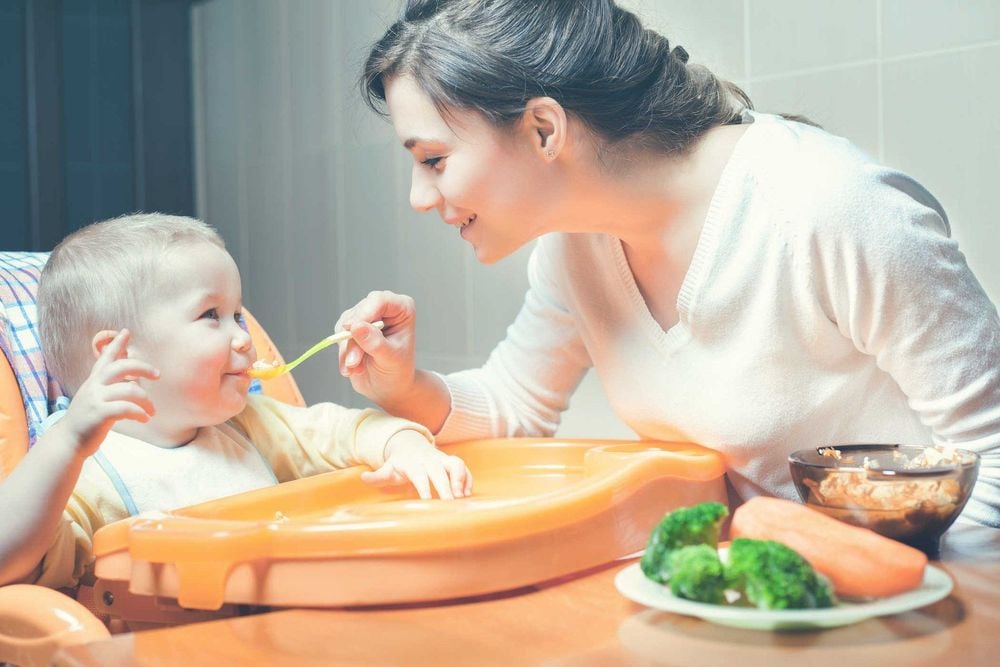
Cung cấp đủ dinh dưỡng cho trẻ
4. When to take your child to the hospital?
When a child has a rash and has the following symptoms, parents should not be subjective and should take the child to the nearest medical facility for examination.Heat rash on the skin spreads, the child scratches more itchy, the skin is red, swollen, painful, ... accompanied by the child crying, fever, more tired The heat rash skin area has ulcers, watery, needs to be applied topical medication as directed by your doctor. Do not apply talcum powder on damaged skin. Heat rash is a state that is not too dangerous, but they make children eat and sleep restlessly, making the body always in a state of restlessness and discomfort. Therefore, parents need to know the information about this issue in order to effectively deal with the unfortunate child with heat rash.
In order to prevent diseases that young children often get, parents should pay attention to nutrition to improve children's resistance. At the same time, add supporting foods containing lysine, essential micro-minerals and vitamins such as zinc, chromium, selenium, B vitamins,... snacks and less digestive problems.
Parents can learn more:
Why do you need to supplement Lysine for your baby?
The role of zinc - Guidelines for reasonable zinc supplementation
Please visit the website Vinmec.com regularly and update useful information to take care of your baby and family.





